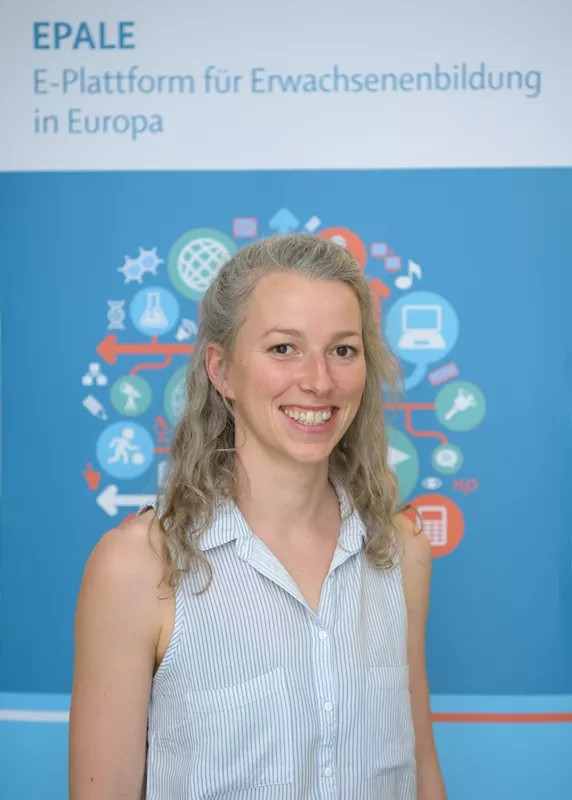Mobility Scouts – engaging older people in creating an age-friendly environment (part 2)
> Back to part 1 of the article
What do we mean by age-friendliness?
A living environment is age friendly if it is self-determined by senior citizens and they can use it safely, whether or not they have limited mobility. Furthermore, it should be inviting and arouse interest in venturing out, being there and taking part. An age-friendly living environment enables and promotes the movement and stay of senior citizens, who are more likely to be affected by limited mobility than younger people, in public spaces.
Why is a project like Mobility Scouts relevant?
By 2060, almost a third of the population of Europe will be 65+. Ageing is therefore not just an individual, but also a societal challenge. We need to be prepared for this in good time and in a variety of ways. Designing living spaces in a way that is age-friendly, inviting and accessible is not only a response to the demographic change, but also takes account of people’s need to be able to move independently in public spaces and take an active part in societal life for as long as possible.
Mobility and participation interact with each other: mobility is the prerequisite for social participation, and various types of participation opportunities increase people’s interest in venturing out. Participation in various fields of public life, i.e. an accessible environment with corresponding services on offer, is a decisive prerequisite for an active, meaningful and healthy life in old age.
Older people are experts when it comes to their personal living environment and know best how services and public spaces should be designed and organised in order to facilitate participation among senior citizens. They want their voices to be heard, their experiences to be acknowledged and their skills to be utilised and appreciated. This is precisely what the Mobility Scouts project exploits: it wants to enable senior citizens to contribute their own perspectives to the design and organisation of their living environments.
Which roles can Mobility Scouts assume?
Mobility Scouts can be active in different fields and at different levels, in order to promote an age-friendly environment. The following overview of the various roles that Mobility Scouts can assume is an attempt to categorise possible fields of activity. In practice, these fields overlap and can be combined.
Explore and tell
As experts in their particular environments, older citizens have a trained eye for age-appropriate spaces or offers. Problems are usually known and discussed with their peers. In many cases, however, the senior citizens concerned do not forward problems to the competent authorities or have reservations about complaining actively to institutions. Without this knowledge, the problems cannot be solved.
Mobility Scouts can therefore act as intermediaries. They can collect feedback and comments from older citizens about their living environment, possible problem areas, public buildings and age-friendly solutions and forward them to the relevant institutions (e.g. companies or local authorities). Mobility Scouts can function as experts in bringing together older people and professionals from different sectors. Experience shows that round tables, guided walks or workshops are appropriate methods for exchanging views and gathering ideas. However, Mobility Scouts can also create direct and anonymous opportunities for all citizens to report problems (e.g. surveys).
Train and communicate
Mobility Scouts can also actively pass on their perspectives and knowledge to target groups relevant in the context of age-friendly environments, such as municipalities, transportation companies and students of architecture, planning or design. Furthermore, Mobility Scouts can actively promote existing opportunities and inform their peers about them.
Co-design and support
In this type of co-production process, older people support municipalities or organisations systematically in the design and production of services or provisions. They could, for example, function as contact persons for older customers, collect their feedback, support the organisation with the development of publications, act as co-designers in planning projects or train other older citizens. The Mobility Scouts could also coordinate support measures.
Inspire and motivate
Mobility Scouts can also organise courses and activities to support older people to participate in social life. Some target groups (e.g. older people with dementia or with disabilities) need special infrastructure and support in place to enable them to leave their homes and get involved. Generally, senior trainers are already a popular concept in fields such as volunteering, inter-generational projects or cultural education.
Initiate and act
Mobility Scouts are also invited to organise events and initiatives to shape age-friendly environments or raise awareness of the daily challenges and obstacles older people face.
Experiences from the project
The experiences and results from the project are incorporated into the Sensitisation Handbook for Stakeholders at Local Level and the Handbook for Practitioners. Furthermore, those interested in online training receive further information relating to the project and the local initiatives implemented as well as tips and tricks for the practical implementation of similar projects.
Further information can be found at: www.mobility-scouts.eu

Since the beginning of 2018, Claudia Auzinger has been working for queraum. cultural and social research (queraum. kultur- und sozialforschung) on projects involved with enabling and empowering people to have a say in the design of their own living environments. After studying Landscape Architecture (The University of Natural Resources and Life Sciences [BOKU], Vienna) and Spatial Planning (TU Wien), she was initially involved with urban development and urban management, where she initiated and managed neighbourhood projects and was the local contact person for residents with questions about the living environment.
Contact:
Photo: © OeAD-GmbH/APA-Fotoservice/ Hörmandinger




